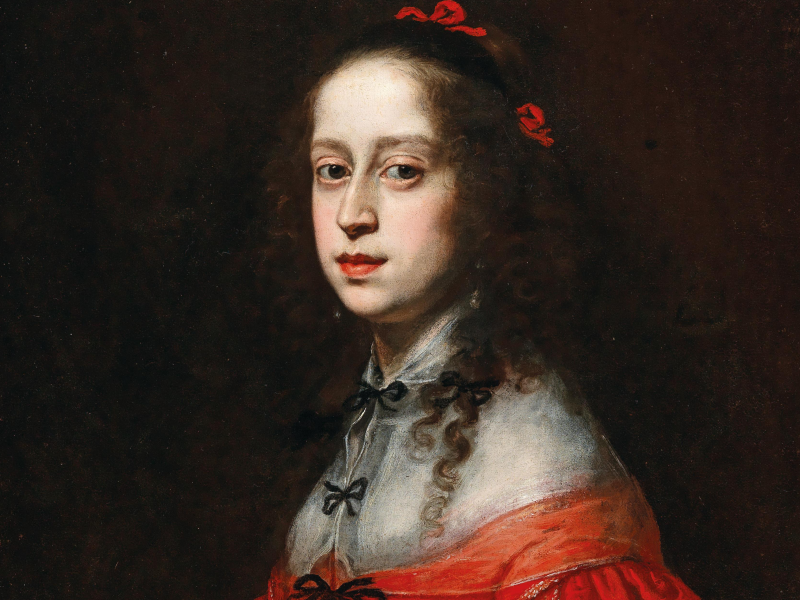
A rediscovered portrait of a
dynastic Habsburg Medici bride
This engaging picture is the portrait of a young woman who was an important pawn in the dynastic politics of the mid-17th century, Maria-Leopoldine, Archiduchess of Austria-Tyrol.
Painted in circa 1647 by the court painter of the Medici family, Justus Sustermans, this work was commissioned by the sitter´s mother the Archduchess Claudia of Habsburg-Tyrol, herself a daughter of the Medici family. This portrait was most probably painted preceding the marriage which would reunite two branches of the powerful House of Austria in 1648.
Archduchess Maria Leopoldine was a prize in the ambitious dynastic designs of her time. She had been considered as a dynastically beneficial consort for an illustrious and powerful ruler, Charles Louis of the Palatinate, who wrote to his mother in 1641, when Marie Leopoldine was just nine years old, to tell her of a plan hatched by his uncle, King Charles I of England and Holy Emperor Ferdinand III (the very man she would in fact later marry), to arrange a marriage between himself and the Archduchess. The marriage between them was intended by the two men to end “all grudges between our two families”. The union never took place and Maria Leopoldine remained, at least for seven more years, an available trump card in the game of dynastic consolidation.
It was after the death of his first wife Maria Anna of Spain, that the Holy Roman Emperor, Ferdinand III (1608 – 1657) needed to find a new suitable spouse. He wrote to the mother of Maria-Leopoldine, the Archduchess Claudia, in November 1647, expressing his desire to marry her and it is thought that this portrait may have been painted to present an image of the potential bride to the Emperor. In the painting Maria-Leopoldine is dressed in the heraldic red and white colours of the House of Austria which clearly suggests her association with the Imperial family. She is wearing a wide, gossamer-thin, almost transparent collar, fastened at the neck by two ribbons, which covers her neck and shoulders and lends a rather chaste note to her clothing. The rose she holds in her hand is a symbolic reference to her bridal status.

In choosing Maria-Leopoldine as his second wife, Emperor Ferdinand III would be marrying the daughter of Leopold V, Archduke of Further Austria who was the brother of his own father, Emperor Ferdinand II. In short he would be marrying his first cousin who, at the age of 17 was to become Empress of the Holy Roman Empire, Queen of the Germans, Queen of Hungary and Queen of Bohemia. Their wedding was “splendid” although it took place during an official state of mourning after the death of King Vladislaus IV of Poland. Maria-Leopoldine died shortly afterwards giving birth to her only child, Archduke Karl Joseph.
Auction Old Master Paintings
10 November 2020
CONTACT
+43-1-515 60-403












